7 practical things you can do with leftover paint around your home including protecting outdoor furniture, tinting cement and creating touch-up kits
Pro tips to make the most of those extra supplies
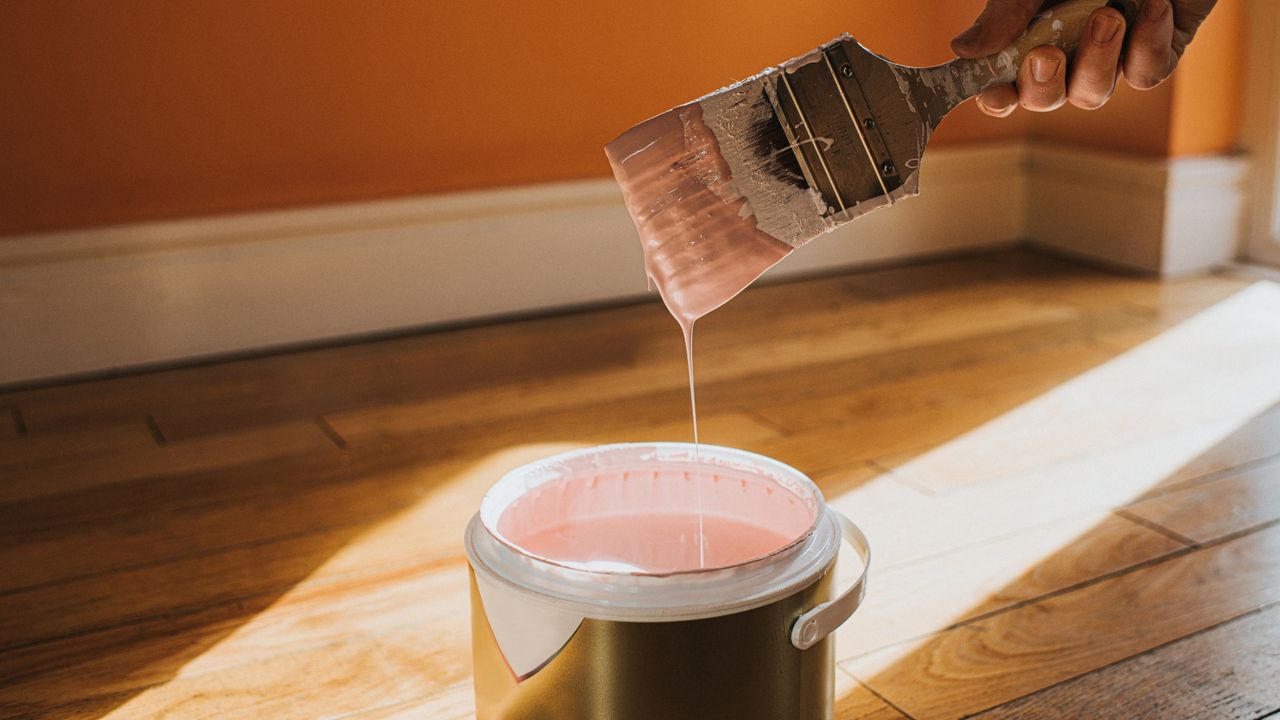

Are you among the many people with tins of leftover paint languishing somewhere in the attic, garage or basement?
Instead of letting it dry up in the tin, here are seven practical ways DIY and construction pros put their leftover paint to good use around your home. And, don't think decor: think DIY.
Clever DIY tips from our pros for leftover paint include color-coding your storage and protecting outdoor furniture.
1. Create a touch-up kit
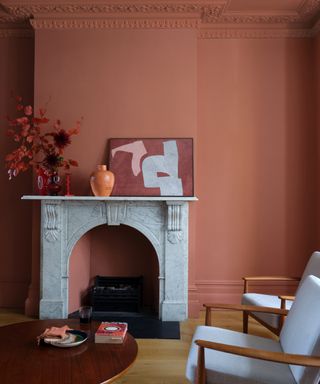
Perhaps the most obvious use for your leftover paint is for touch-ups around the home. Creating a touch-up kit can help ensure your paint is at-the-ready for when those stains or scuff marks occur.
Joseph DeGruttola, founder of Knockout Home Solutions, says, 'Creating a touch-up kit means when scuffs, chips or peeling happens, you'll have easy access to small amounts of the right paint, so you can stay ahead of everyday wear and tear.
'To create your kit, simply store a small amount of each wall color in a labeled, tightly sealed container and apply touch-ups to scuffs or chips as they happen. These Ball Mason Wide Mouth Jars with Lids and Bands, available from Amazon, are a great choice for storing small amounts of paint securely, with wide lids for easy access. These jars keep paint fresh and make it easy to label so you can organize by color and room.'
For more, check out our guide on how to fix peeling paint.
2. Protect outdoor furniture
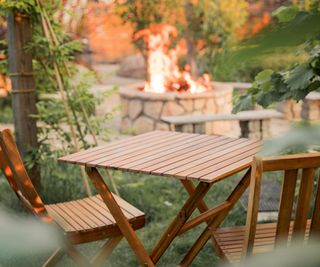
A layer of paint can help protect wooden outdoor furniture from the elements.
DeGruttola says, 'Leftover paint can give outdoor furniture, wooden planters, or window boxes a new lease of life. It’s an easy way to add charm to your garden without buying new décor.
'This Wooster Brush Shortcut Angle Sash Paintbrush from Amazon is a great tool for precision work on smaller surfaces like planters and furniture. The angled sash allows for better control, making it easy to apply leftover paint neatly on detailed surfaces.'
If you're unsure if your yard furniture needs more than a coat of paint, check out our guide on when to replace your outdoor furniture.
3. Label garbage cans
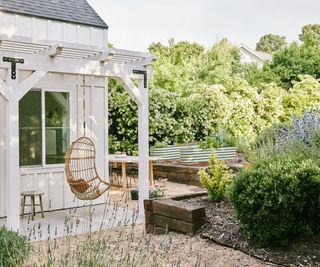
Put an end to garbage bin mix-ups by labelling yours with leftover paint.
Karina Toner, operations manager at Spekless Cleaning, says, 'Painting your house number onto your garbage bins helps you identify them quickly, reducing the chance of loss or mix-ups with neighbors.
'To do this neatly, use this ScotchBlue Original Multi-Surface Painter's Tape from Amazon to mark out a rectangle on the bin, paint it with your leftover paint, and once dry, use a stencil to add your house number for a clean finish. I like this YEAJON Curb Stencil Kit from Amazon, which makes for sharp, easily visible numbers.'
DeGruttola adds, 'If you're looking for lettering, such as for house names, this Martha Stewart Crafts Alphabet Stencil Kit, also from Amazon, is perfect for creating clean, consistent lettering. They’re reusable, easy to clean, and provide a polished look that makes labels or markings stand out.'
I used regular leftover wall paint to mark my house number on our bins and it has so far lasted four years without fading.
4. Paint tool handles
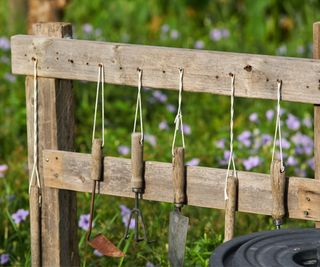
Make tools last longer and more easily identifiable with a dash of leftover paint.
Toner says, 'Painting tool handles makes them easy to identify, reduces the chance of misplacing them in the yard, and helps prevent rust.
'Sand the handles lightly first, then apply a coat of leftover paint, before letting it dry completely. Optionally, add a clear coat for extra durability. Rust-Oleum Painter’s Touch Clear Coat from Amazon adds a protective layer that helps the paint withstand the outdoors.'
Steve Evans, owner of Memphis Maids, adds, 'Don't forget that you can also apply the same trick for old brooms, dustpans or mops. With time these start to look worn down, especially the cheap metal ones, but they still work, so repainting them will extend their lifespan – plus, matching handles will give your cleaning supplies a satisfying, cohesive look.'
5. Color-code your storage
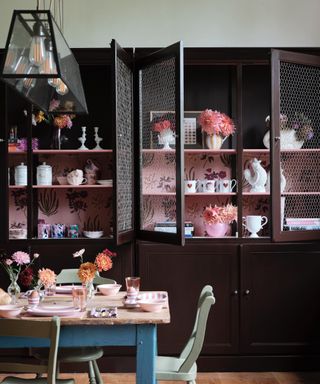
Leftover paint is perfect for color-coding storage boxes.
Jeremy Morgan, brand president at Groovy Hues Painting, says, 'Color-coded storage is one of those organizational tricks that sounds simple, but makes a world of difference. By assigning a color to each type of item – like tools, holiday decor, or camping gear – you create a system that’s both visually intuitive and incredibly efficient. Just a quick glance, and you know exactly where to find or put away what you need.
'Gather everything you’re storing and organize it into categories. Think tools, seasonal items, sports gear – you name it. Once you’ve got everything sorted, assign a specific color to each category. It’s a quick way to visually streamline the space.'
Your next step depends on how many shades of leftover paint you have. With enough, you can assign a colour per category. If you only have one, paint all containers with the same color, then – once dry – write over the paint in the different colors.
Morgan recommends these Sharpie Oil-Based Paint Markers from Amazon. He says, 'These markers are super versatile – working on plastic, metal, wood, and other surfaces without needing multiple coats, making them perfect for permanent, bold color coding.'
Morgan adds, 'Remember, it’s not just about color – placement is important too. Keep frequently-used items at eye level or within easy reach, and store the once-in-a-while stuff higher or lower. This way, your system is as functional as it is visually organized.'
For more, check out our guide on how to maximize storage in every room.
6. Tint cement
If you have cement or concrete blocks in your garden, use leftover paint to tint them or create a colorful, artistic effect.
Morgan says, 'Tinting cement with leftover latex paint is a fantastic trick for DIYers who want a custom look without buying special pigments. Adding a bit of color to your cement not only opens up design possibilities, but gives the cement a slightly enhanced durability.
'Quikrete 1240 Quick-Setting Cement from Walmart is my favorite for a professional look without a professional price tag.'
Achieving the perfect tint begins with mixing your cement powder with water as the package instructs. You want a smooth, workable consistency that’s not too runny. Think pancake batter.
Morgan says, 'Here’s where the magic happens. Pour a small amount of latex paint into the cement mix and stir thoroughly. Start with just a bit – it’s easy to add more if needed. The color will likely appear lighter once the cement dries, so keep that in mind if you’re going for a bold shade.
'Once you’ve got the shade just right, pour your tinted cement into your mold and allow it to cure fully. Follow the drying time for your specific cement type to get the best results.'
For outdoor cement, Morgan recommends a clear, water-based sealant – such as this Uanit Invisible Waterproof Sealant from Walmart – for added longevity.
7. Label plant pots
Painted labels on plant pots make it easy to identify herbs, flowers, or vegetables.
Laura El, founder of New York-based Stellar Villa, says, 'Labeling your plant pots with a simple numbering system allows you to leave easy-to-follow care instructions for someone else while you're away, ensuring each plant receives the correct amount of water and light.
'Using any color of leftover paint, mark each pot with a small number on the inside top edge, above the soil level. Position the number on the side facing the room so it won't be visible unless you are looking for it.
'Separately, type up a numbered list with specific care guidelines for each plant – such as water amounts, sunlight needs, or pruning tips.'
El recommends this AROIC Store All Purpose Paint Brush Set from Amazon, adding, 'If you don't have a suitable brush, this set is affordable and works great for smaller detail work like numbering.'
Our guide to the best terrarium plants contains top tips to improve your interior foliage game.
So there you have it – seven things you can do with leftover paint around your home. With these ideas, leftover paint becomes a versatile tool for adding function, protection, and a splash of color to your home.
Next, check out our writer's five time-saving painting lessons.
Sign up to the Homes & Gardens newsletter
Design expertise in your inbox – from inspiring decorating ideas and beautiful celebrity homes to practical gardening advice and shopping round-ups.

With more than a decade of experience writing news, lifestyle, consumer, and human interest articles for a wide range of national and international publications, Andy is a highly-qualified journalist writing features for the national press. From front porch to backyard, attic to basement, Andy has written about every area of the home. He specialises in bringing together the best industry expertise to answer all of your most pressing home and garden questions about seasonal and everyday cleaning, decluttering, organizing and DIY.
-
 7 easy ways to keep chickens safe from garden predators – expert advice for securing your coop and your flock
7 easy ways to keep chickens safe from garden predators – expert advice for securing your coop and your flockIf you’ve got chickens in your garden, the last thing you want is to see them fall victim to sneaky predators
By Kayleigh Dray Published
-
 How to clean a balcony in 5 simple steps – refresh yours and enjoy the spring sunshine with our expert guide
How to clean a balcony in 5 simple steps – refresh yours and enjoy the spring sunshine with our expert guideFrom railings to furniture, experts reveal how to bring your balcony back to life
By Andy van Terheyden Published
-
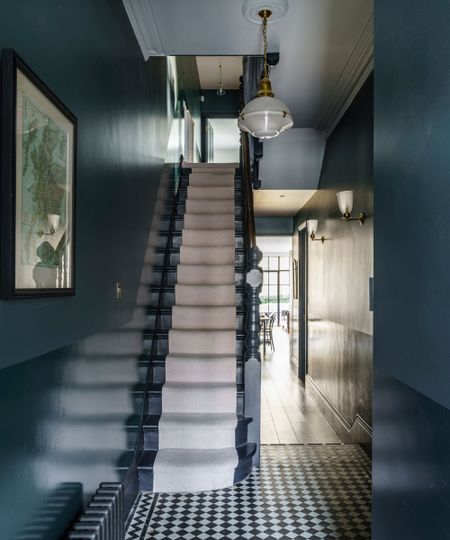 5 beautiful and impactful home improvement projects you can DIY this weekend for under $200 – you don't have to spend big to make a statement
5 beautiful and impactful home improvement projects you can DIY this weekend for under $200 – you don't have to spend big to make a statementFrom painting your fireplace to redecorating your door, little changes can transform and refresh your space
By Ottilie Blackhall Published
-
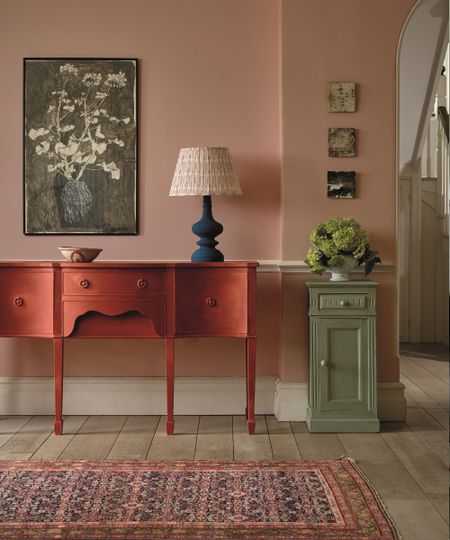 How to paint over stained wood – 6 simple steps expert painters swear by for even, lasting finishes
How to paint over stained wood – 6 simple steps expert painters swear by for even, lasting finishesSkipping even one step will result in chipping paint, experts warn
By Natasha Brinsmead Published
-
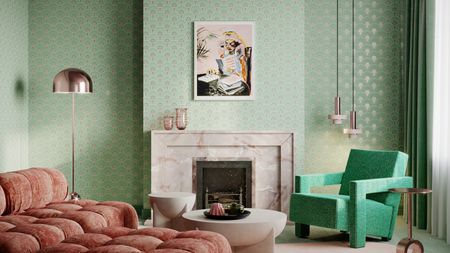 Can you put wallpaper on textured walls? Experts reveal it is indeed possible with this vital step
Can you put wallpaper on textured walls? Experts reveal it is indeed possible with this vital stepPrep, prep and prep some more for wallpapering success
By Sophie Warren-Smith Published
-
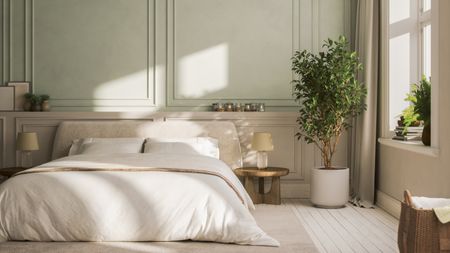 8 helpful ways to re-purpose old pillows – from making handy garden kneelers and draft excluders, to cozy pet beds
8 helpful ways to re-purpose old pillows – from making handy garden kneelers and draft excluders, to cozy pet bedsSustainability experts say these bulky items don't have to go to waste
By Sophie Warren-Smith Published
-
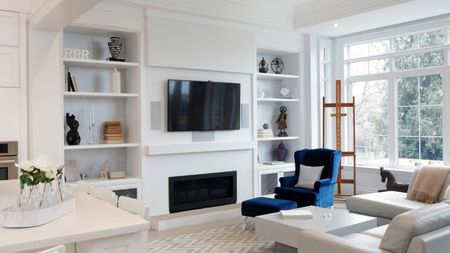 Construction pros reveal the 6 mistakes to avoid when hanging drywall for perfect walls and ceilings
Construction pros reveal the 6 mistakes to avoid when hanging drywall for perfect walls and ceilingsThey see these all the time
By Natasha Brinsmead Published
-
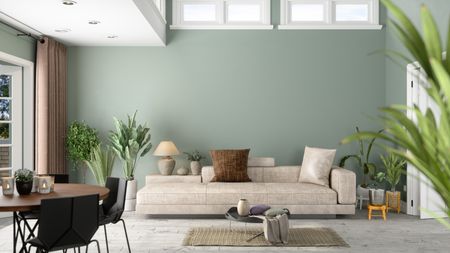 Why is my wall paint bubbling? Decorators reveal why it happens and how you can fix it
Why is my wall paint bubbling? Decorators reveal why it happens and how you can fix itBubbles look unsightly and might indicate a more serious problem
By Ottilie Blackhall Published
-
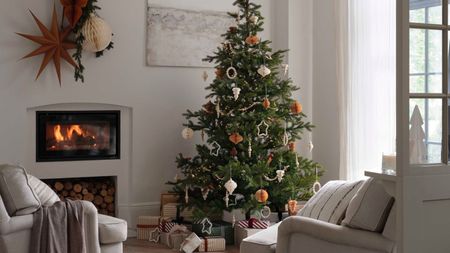 Christmas decorating stalled by missing tools and essentials? These 6 festive DIY job must-haves will get your delayed tasks back on track
Christmas decorating stalled by missing tools and essentials? These 6 festive DIY job must-haves will get your delayed tasks back on trackGet your holiday decorating going again with our Christmas first-aid kit
By Chiana Dickson Published
-
 I saved my dull knives with a $20 sharpener style favored by Bobby Berk – it's easily my favorite kitchen buy of the year
I saved my dull knives with a $20 sharpener style favored by Bobby Berk – it's easily my favorite kitchen buy of the yearIt works so well
By Punteha van Terheyden Published